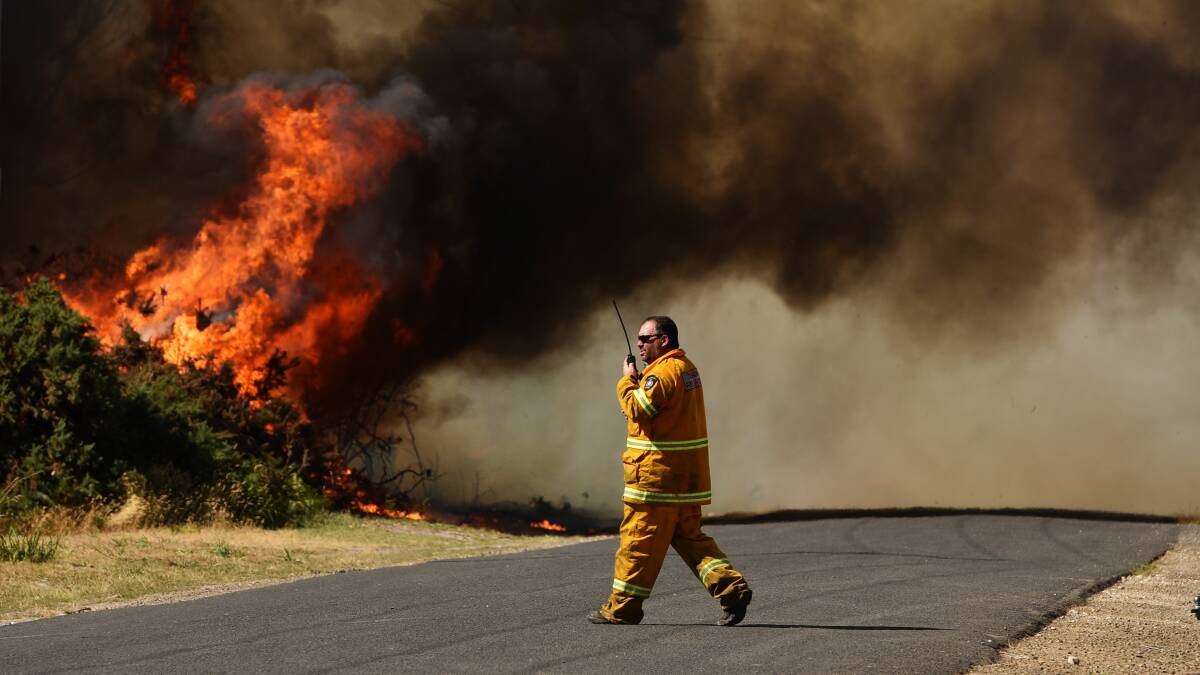As global temperatures set all-time high records, we have again entered an Australian summer asking - are we ready for this?
This annual questioning is prompted by varied cues - floods in recent years, now bushfires and the prospect of cyclones, flooding, thunderstorms and heatwaves. As recently as last week, storms and heavy rain left a deluge across the ACT, NSW, Victoria and southern Queensland.
Queensland has already experienced one of its most destructive bushfire seasons, while central Australia has seen large-scale bushfires. All the southern states have had previews of the sort of fire season that is likely to come after recent years of La Nina rain and healthy growth in our forests and grasslands.
We are rightly concerned about the risk of bushfire, but the prospect of multiple heatwaves poses potentially a far more extended threat this summer, a danger that can't be ignored.

Following spring's blast of heat, the Bureau of Meteorology has forecast warmer than average temperatures, meaning that there is a greater chance of heatwaves this summer. Heatwaves are not just a single hot day - we will have them too - but are characterised by unusually hot maximum and minimum temperatures over a period of three days or more.
You may be asking: 'so a bit of hot weather in summer, what's the problem?' Heatwaves are deadly. Unlike a bushfire, cyclone or flood their arrival seems less dramatic but Natural Hazards Research Australia science has found that heatwaves account for more deaths in Australia than the sum total of all other natural hazards combined. Most weather-related injuries are also due to extreme heat.
Global research has found that this burden will increase with climate change. El Nino periods are historically the most lethal and that's the period we are in now.
Extreme heat does not only impact our physical health but can also lead to mental distress. Following a heatwave in western Sydney in 2017, 15 per cent of people reported feeling physically unwell, and 10 per cent felt mentally stressed or depressed.
The research shows that those that are older, poorer, isolated or live with a disability or chronic illness are most at-risk, as well as outdoor workers.
The economic costs of heatwaves too are substantial and research is trying to better understand this.
Heatwaves cause power and transport disruptions, crop damage, and other failures across industry and agriculture. In the workforce they lower rates of productivity and increase absenteeism.
The deadly 2009 heatwave in Victoria highlighted the cascading effects of disruption to power supply, which subsequently caused train cancellations, traffic light failures and impacted business activity.
Our homes, schools and workplaces rely on air-conditioning but not everyone can afford it as prices rise.
There is much to be done at the local, national and international levels to tackle climate change, which is the most effective long-term mitigation against heatwave.
Meanwhile, there are simple measures that you can take to reduce your risk. Seal any gaps to stop hot air getting inside your home. Turn off unneeded appliances that can generate heat.
You don't need to cool your entire home. Find the coolest room. Close windows, curtains and doors to other rooms and use fans or air-conditioning for cooling.
READ MORE:
Alternatively, make a plan to visit a cool place such as a shopping centre or library. Look out for family, friends and neighbours that are more vulnerable.
Have a cooler box ready with water and ice, a battery powered radio and a powerpack to charge your mobile phone in case of blackouts. If you're exercising, pick the coolest part of the day to avoid placing any unnecessary heat stress on your body.
Stay tuned to heatwave warnings. Don't forget pets. Ensure they have shade and plenty of water.
These simple measures are effective at providing relief, but it is at the community level where action can best reduce heatwave risk. Programs such as extensive tree planting and shading by local councils are great examples, but more needs to be done if we are to seriously deal with heatwaves.
Urban planning must account for heatwave risk. How and where we build matters.
New buildings should be able to maintain safe temperatures if air conditioning fails. There are also significant opportunities to retrofit individual homes by changing to a lighter roof colour or increasing shading.
Incentives to encourage measures like this for older buildings must be investigated. Implementing heat risk ratings for individual buildings would assist households to better understand their risks and the benefits of these measures.
Community organisations should be resourced to check-up on those most at-risk. Businesses, retail, schools and health centres should be prepared for blackouts.
So, are we ready? Not quite, not yet. Deadly heatwaves are a significant risk and the attention we give them today will determine our ability to endure them this summer and beyond.
- Andrew Gissing is the chief executive officer of Natural Hazards Research Australia.

